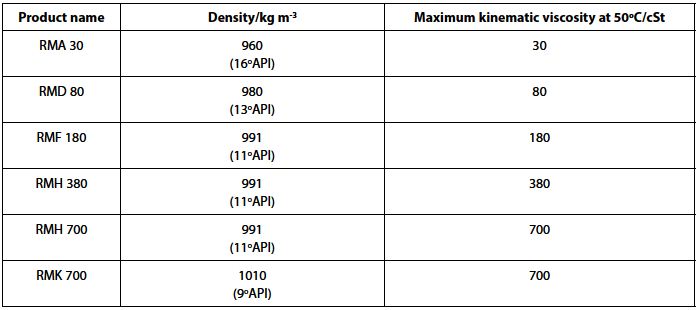The terms ‘heavy fuel oils’ and ‘residual fuel oils’ are approximately synonymous. By far the main application is shipping, where in addition to purely residual oils other oils comprising blends of residue with distillate are used. They are both examples of ‘bunker fuel’ and this term might also be applied to distillate oil for marine use. Such distillate will be in the diesel boiling range.
Density and viscosity of residual oils
Examples of density-viscosity pairs for various bunker fuels are obtainable from the web pages of the O.W. Bunker group, one of the world’s major suppliers of fuel oil for marine use. The information in the table below is taken from.

The number in the product name is the maximum kinematic viscosity at 50°C is cSt Bunker fuels are always identified in this way. Viscosity is without doubt the most important property of a bunker fuel. This is because a modern fuel supply system on a vessel releases fuel to the combustion chamber at a particular viscosity, called the viscosity set point. The fuel supply system can adjust the viscosity of the influx fuel by temperature regulation only within a limited range, so supply of a fuel very distant from the viscosity set point will cause malfunction.
Residual fuel oils can be blended with each other to a target viscosity. A residual material can be blended with a distillate to a target viscosity. A distillate for this purpose needs to be a heavy one so that it will not cause the flash point of the final blended product to be too low.













